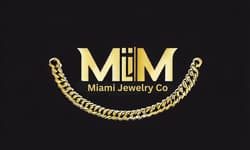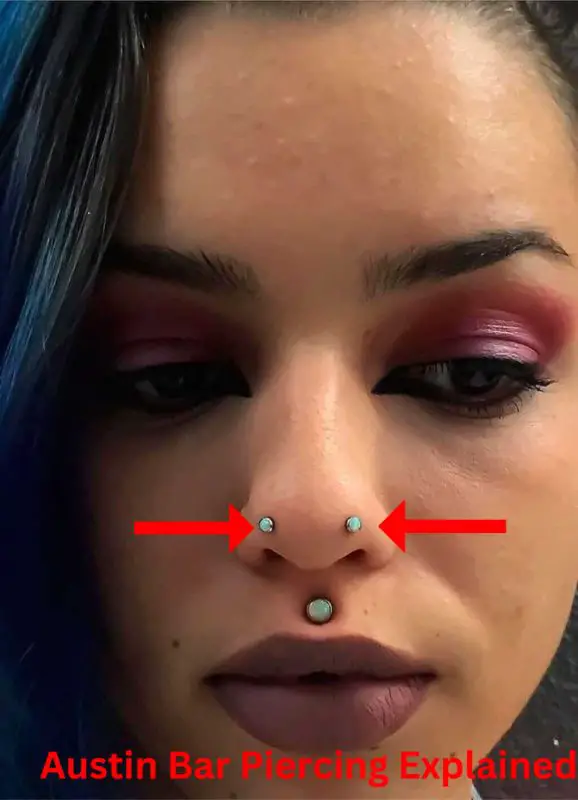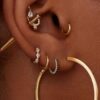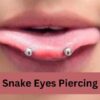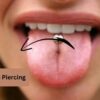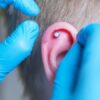Nose Piercing
Austin Bar Piercing Explained: The Journey from Pain to Healing, Cost, and Jewelry Selection
Looking for a bold style statement that’s truly you?
Tired of feeling lost in the crowd?
Austin Bar’s nose piercing could be your answer.
But diving into unique body modifications can be tricky. You need a guide you can trust. And I’m here to help.
With years of experience writing about piercings, I’ve got the knowledge and firsthand experience to guide you. From the piercing process to aftercare tips, dealing with problems, and picking the right jewelry, I’ve got it covered.
This guide will explore Austin Bar piercing, its process, aftercare tips, potential issues, and jewelry choices. Ready for a piercing that sets you apart?
Let’s dive in.
Contents
- 1 Key Takeaways
- 2 What is Austin Bar Nose Piercing?
- 3 The Origin of Austin Bar Nose Piercing
- 4 The Process of Getting an Austin Bar Nose Piercing
- 5 Before the Austin Bar Nose Piercing
- 6 Austin Bar Piercing – Video Guide
- 7 Why Choose Austin Bar Nose Piercing
- 8 Care and Maintenance of Austin Bar Nose Piercing
- 9 The Pain of Austin Bar Piercing
- 10 Comparing Austin Bar Piercing with Other Types of Nose Piercing
- 11 Risks and Complications of Austin Bar Nose Piercing
- 12 Potential Problems and Solutions with Austin Bar Nose Piercing
- 13 Expert Recommendations For Austin Bar Nose Piercing Jewelry
- 14 How much does an Average Austin Bar Piercing Cost
- 15 What are the Best Materials for Austin Bar Nose Piercing
- 16 FAQs
- 17 Conclusion
Key Takeaways
- The Austin Bar piercing is unique, crossing the tip of the nose.
- The piercing process involves preparation, marking, piercing, inserting jewelry, and aftercare.
- Potential issues include infection, jewelry rejection, migration, and allergic reactions. Prompt attention and good hygiene practices can help.
- The Austin Bar piercing is more distinctive and visible than other nose piercings like nostrils, septum, and bridge piercings.
- Pain level is moderate – typically higher than a nostril piercing but less than a septum piercing.
- Choosing the right jewelry involves considering size, material, and weight. Preferred materials include titanium, surgical stainless steel, niobium, gold, and biocompatible plastics.
- Always consult a professional for a safe and successful piercing experience.
What is Austin Bar Nose Piercing?
The Austin Bar is unique in its positioning. It’s a horizontal piercing, performed at the tip of the nose. When adorned with a straight barbell, it adds a subtle yet bold element to one’s facial aesthetic, striking a balance between edginess and elegance.
The Origin of Austin Bar Nose Piercing
The Austin Bar nose piercing, named after its pioneer, is relatively new in the world of body modification. Despite its novelty, it has carved a niche for itself, captivating individuals who dare to step off the beaten path.
The Process of Getting an Austin Bar Nose Piercing
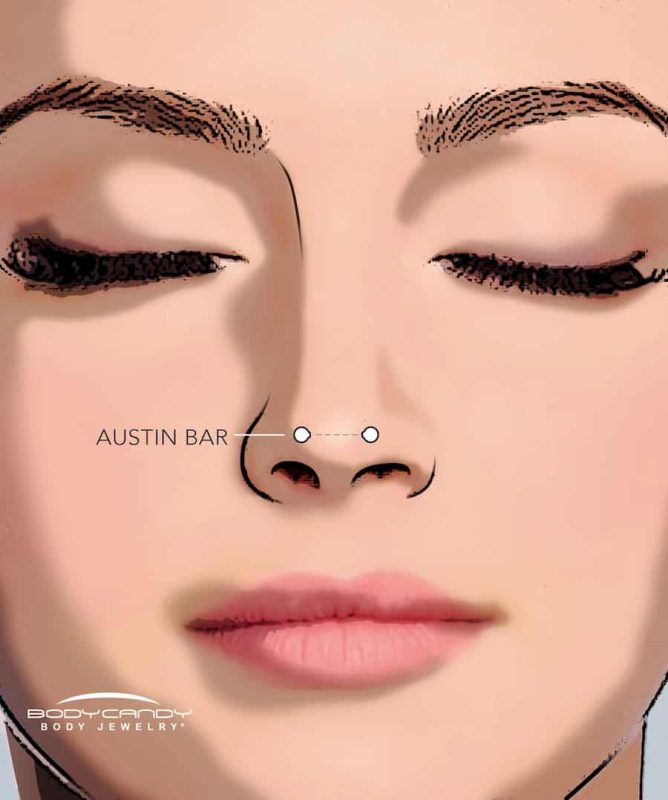
Getting an Austin Bar piercing is a three-phase journey: preparation, the piercing process, and aftercare.
Before the Austin Bar Nose Piercing
In the preparation phase, it’s important to choose a reputable piercing studio and a seasoned professional.
I recommend visiting the studio in person, to ensure it maintains proper hygiene standards. Also, consult with the piercer about the procedure, risks, and aftercare.
Austin Bar Nose Piercing Austin Bar Piercing Process – Step-by-Step Guide

The procedure for getting an Austin Bar piercing may seem a bit daunting, especially if you’ve never had a piercing before. But worry not! I’m here to walk you through the process step by step, so you know exactly what to expect.
Step 1: Preparing for the Piercing
Once you’ve made up your mind, and chosen your professional, you’ll arrive at the studio for your appointment. The piercer will start by cleaning your nose thoroughly with a disinfectant to minimize the risk of infection.
Step 2: Marking the Entry and Exit Points
The piercer will then use a surgical marker to mark the entry and exit points for the piercing on your nose. These markings are made based on your nose’s anatomy and your personal preference for placement. You’ll have the chance to check these markings in a mirror and give your approval before moving on to the next step.
Step 3: The Piercing
Once the markings are approved, the piercer will carefully insert a sterilized needle through the marked points to create the piercing. This is done quickly and professionally, but you may still feel a brief, sharp pinch. Deep, even breathing can help manage any discomfort.
Step 4: Inserting the Jewelry
After the piercing is made, the piercer will insert your chosen piece of jewelry. This needs to be done swiftly to prevent the piercing from closing up. You might feel some pressure and discomfort at this point, but it should be over in a matter of seconds.
Step 5: Cleaning and Bandaging
Finally, the piercer will clean the area once more and may apply a small bandage to keep the area protected for the first few hours. They will then give you some aftercare instructions to follow at home.
Austin Bar Piercing – Video Guide
After the Piercing
The aftercare phase is crucial to the healing and longevity of the piercing. Regular cleaning with a saline solution, avoiding unnecessary touching, and keeping an eye out for signs of infection are all part of this stage.
Why Choose Austin Bar Nose Piercing
The Austin Bar nose piercing is more than a fashion statement; it’s a testament to individuality and non-conformity.
Popularity and Style
The Austin Bar has gained traction among piercing enthusiasts for its cutting-edge style. Unlike other nose piercings, the Austin Bar runs horizontally across the nose’s tip, offering a unique look that separates it from mainstream trends.
Uniqueness and Statement
Sporting an Austin Bar is like wearing your personality on your nose—bold and unabashed. It stands as a symbol of non-conformity and individualism, a beacon for those unafraid to defy conventional beauty norms.
Care and Maintenance of Austin Bar Nose Piercing
Care for an Austin Bar piercing doesn’t end when the healing does—it’s an ongoing commitment.
Initial Care and Healing Time
The initial healing time for an Austin Bar piercing is typically 2-4 months. During this period, it’s essential to clean the piercing with a saline solution regularly and avoid unnecessary touching or twisting of the jewelry.
Long-term Maintenance and Health Considerations
Beyond the healing phase, the piercing needs regular cleaning to maintain hygiene. Be aware of any unusual discomfort, redness, or swelling, as these could be signs of infection. In such cases, consult with a professional immediately.
The Pain of Austin Bar Piercing
Pain is a subjective experience and varies from person to person. Generally speaking, the Austin Bar piercing is considered to be of moderate pain intensity. It may hurt more than a nostril piercing but less than a septum or nasallang piercing. It’s worth noting that the actual piercing process is quick, and any pain experienced is brief. It’s the healing process that takes time and care. Piercing enthusiasts often describe the experience as a quick, sharp pinch followed by a dull ache. However, everyone’s tolerance and reaction to pain are different.
Comparing Austin Bar Piercing with Other Types of Nose Piercing
Austin Bar vs. Nostril Piercing
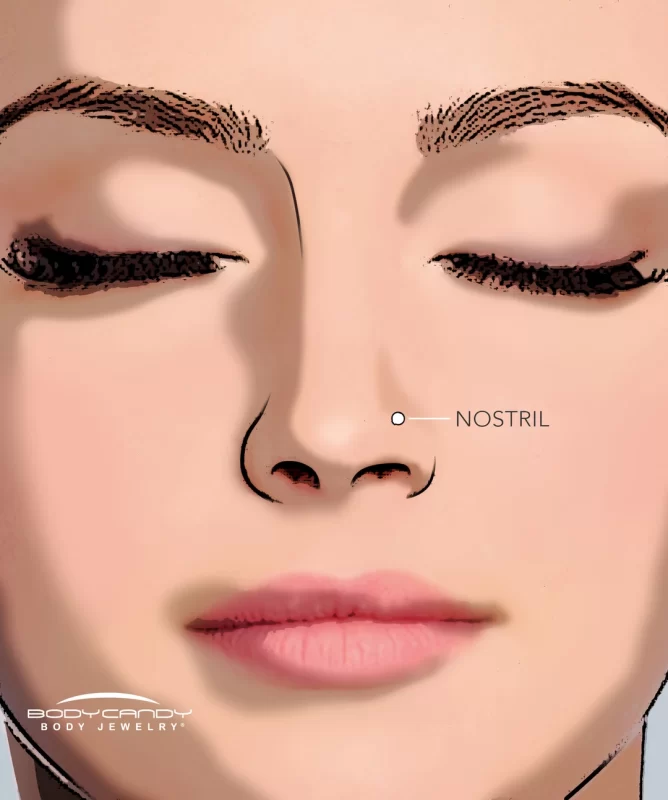
A nostril piercing is a single piercing on either side of the nose, while an Austin Bar piercing goes horizontally across the tip of the nose. Nostril piercings are more common and may be seen as more conservative, while Austin Bars are unique and make a stronger style statement.
Austin Bar vs. Septum Piercing

A septum piercing goes through the nasal septum, while an Austin Bar piercing is on the tip of the nose. Septum piercings can be hidden by flipping the jewelry into the nostrils, but Austin Bar piercings are always visible.
Austin Bar vs. Bridge Piercing
A bridge piercing is done horizontally across the bridge of the nose, while an Austin Bar piercing is at the tip. Bridge piercings are more noticeable due to their location, but Austin Bar piercings are more unusual and therefore often seen as more intriguing.
Risks and Complications of Austin Bar Nose Piercing
Despite all precautions, risks are inherent in any form of body modification. Potential complications include infection, scarring, jewelry rejection, or migration.
Potential Problems and Solutions with Austin Bar Nose Piercing
Problem: Infection
Despite taking every precaution, infection is a potential risk with any piercing. Signs of an infection include redness, swelling, and discharge from the piercing site.
Solution:
In the event of an infection, it’s vital to seek medical attention promptly. Never attempt to treat a severe infection yourself. For minor cases, saline soaks and improved hygiene can help.
Problem: Jewelry Rejection or Migration
In some cases, your body might reject the piercing, leading to the jewelry gradually moving out of the piercing site, or migrating to a different position.
Solution:
If you notice signs of rejection or migration, consult with your piercer or a healthcare provider. You might need to remove the jewelry and allow the piercing to heal fully before attempting again.
Problem: Allergic Reaction
Allergic reactions can occur if you’re sensitive to the material of the jewelry used.
Solution:
If you develop an allergic reaction, removing the jewelry is usually necessary. Opt for hypoallergenic materials like titanium or surgical steel when you try again.
Expert Recommendations For Austin Bar Nose Piercing Jewelry
The jewelry you choose for your Austin Bar significantly influences its overall look and the healing process.
For an Austin Bar nose piercing, here are my recommendations:
Size Matters
Austin Bar piercings need straight barbells. Pick one that’s a bit longer than your nose. This helps if your nose swells after the piercing.
Pick the Best Material
Material choice is crucial. Titanium, surgical stainless steel, and niobium are all good picks. These don’t usually cause allergies.
Opt for Light Jewelry
Light jewelry puts less pressure on your piercing. This helps avoid discomfort and other issues.
Ask a Pro
Don’t forget to ask your piercer for advice. They can help you make the right choice.
How much does an Average Austin Bar Piercing Cost
When considering a unique piercing like the Austin Bar, you might be wondering about the cost. On average, the price of an Austin Bar nose piercing can range from $50 to $100. However, this can vary based on several factors:
Location and Piercer
The price can differ greatly depending on where you live and the piercer’s expertise. More experienced piercers or piercing studios in urban areas may charge more.
Jewelry
The cost of jewelry is often separate from the piercing fee. The type, material, and design of the jewelry you choose will influence the total cost.
Aftercare Products
Investing in aftercare products such as saline solutions for cleaning the piercing can add to the overall cost.
What are the Best Materials for Austin Bar Nose Piercing
Based on my years of experience in the piercing world, I recommend the following materials for an Austin Bar nose piercing:
Titanium
Titanium is an excellent choice for body jewelry due to its hypoallergenic properties. It’s lightweight, resistant to corrosion, and comes in a variety of colors, making it both practical and aesthetically pleasing.
Surgical Stainless Steel
Surgical stainless steel is another good option. It’s durable, rust-resistant, and less likely to cause an allergic reaction. However, it is heavier than titanium, so it may not be the best choice for everyone.
Niobium
Niobium is similar to titanium in terms of its hypoallergenic properties and can be a good choice for those with sensitive skin. It’s also lightweight and available in various colors.
Gold
If you prefer a more luxurious look, consider high-quality gold (14k or above). However, ensure it’s nickel-free to avoid potential allergic reactions.
Resources
- How To Reopen A Closed Nose Piercing
- Double Nose Piercing
- Nasallang Piercing
- Rhino Piercing
- High Nostril Piercing
- Mantis Piercing
- Nose Bridge Piercing
- Is Titanium Good For Nose Piercings
- Foods To Avoid After Nose Piercing
- What Gauge Is A Nose Piercing
- Types of Nose Rings
FAQs
What is an Austin Bar Piercing?
The Austin Bar piercing is a unique nose piercing. It’s a barbell through the tip of the nose, with both ends showing on each side. It’s named after the first person who had it, Austin Bar.
How is an Austin Bar Piercing Done?
A pro piercer does the Austin Bar piercing. They clean and mark the nose, then use a needle to make the hole. Then they insert a straight barbell. It needs the skill to do it right and keep pain low.
What is the Difference Between the Mantis and the Austin Bar Piercing?
The Mantis and the Austin Bar piercings both use a straight barbell, but the place and direction are different. The Mantis goes down the nose with ends showing at the top and bottom. The Austin Bar goes across the nose tip, with ends showing on each side.
What is the Difference Between Austin Bar and Nasallang?
The Austin Bar and Nasallang piercings use straight barbells, but they are different. The Austin Bar goes through the nose tip. The Nasallang is a tri-nasal piercing – it goes straight through the nose, piercing both nostrils and the septum.
How painful is an Austin Bar nose piercing?
An Austin Bar piercing might cause momentary pain, which varies per individual.
Can I change the jewelry of my Austin Bar by myself?
Yes, you can, but ensure your piercing is fully healed before changing it yourself.
What should I do if my Austin Bar gets infected?
If infected, don’t remove the jewelry. Clean it and consult with a healthcare provider.
Can an Austin Bar piercing close up if I remove the jewelry?
Absolutely. A new Austin Bar piercing can close quickly if the jewelry is removed.
Conclusion
The Austin Bar nose piercing is an embodiment of individualism and boldness. Its unique design, coupled with the cultural heritage of nose piercing, makes it a fascinating choice for those daring to be different. It’s not just a piercing—it’s a journey of self-expression and transformation.

Camila Luna is a passionate jewelry enthusiast and content creator at Miami Jewelry Co. With a focus on providing high-quality, Miami-style jewelry, Camila and her team specialize in a wide range of jewelry that includes bracelets, necklaces, earrings, and more
